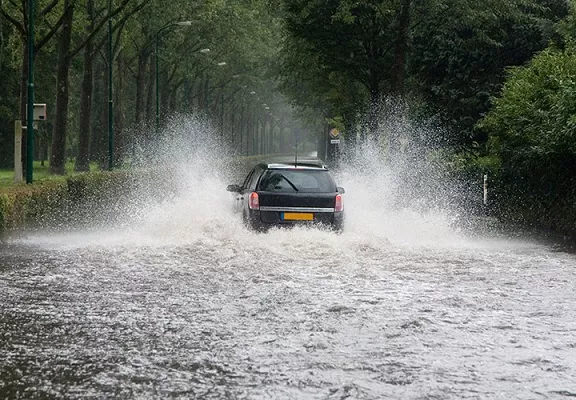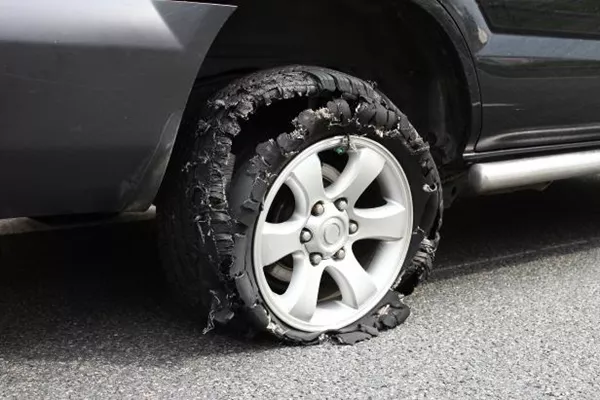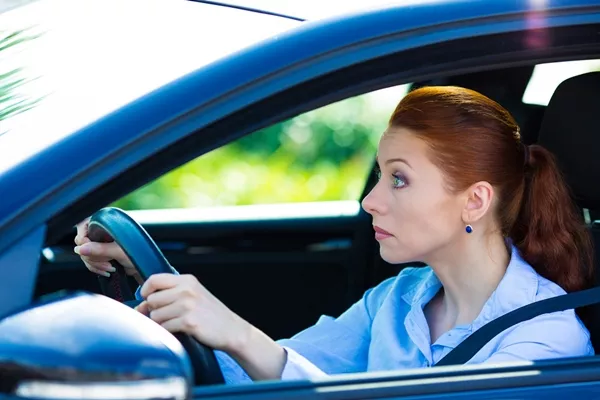Whether you’re a new or seasoned driver, there is never enough training that can prepare you to drive during emergency situations. Philkotse.com now provides you useful tips to help you deal with the common emergencies drivers usually encounter on the road.
Let us all be prepared and ensure our safety, as well as our passengers’ and pedestrians.
Emergency situations: What can happen, what you should do?
Here are the most common emergencies you might face while driving and some recommendations to help you get out of them safely.
1. Flood
As we all know, it’s hard to predict when the rain comes -- and hard. The day can start sunny but the roads will end up flooded due to afternoon showers. Some roads are more prone to flooding and easily get flooded even after a light downpour.

Drive slowly when you encounter flood
If you’re in the middle of the road and you’re caught by fast-rising water, it is best to find an area (hopefully elevated) where you can park your car safely. If you really need to drive through a flood, it is best to stay in first or second gear for manual transmission and L or 1 in AT.
Drive slowly while slipping through the clutch and revving up the engine. For drivers of automatic-transmission cars, make sure your foot stays on the accelerator while controlling your speed using the brake. It is also recommended never to shift gears.
>>> Read more: Best car features to drive through flood in the Philippines.
2. Sudden stops
We share the road with other vehicles, pedestrians, and even animals who sometimes aren’t where they should be. At times, we may be surprised to see stray animals on the road, too. Other unexpected road blockages include cars and trucks stopped on the road due to vehicle problems.
It is wise to know how you can protect yourself and everyone you share the road with. Avoid accidents and damage to vehicles by being aware of when you should stop and make sure you do so at an appropriate distance.

Stray cats might catch you off guard
Cars manufactured from 2012 to the present have features like the electronic stability control (ESC) and ABS - Anti-lock braking system. If your vehicle has these, all you have to do is step on the brake as hard as you can and then navigate the steering wheel to safety.
When you hit the brakes, a light indicating ABS will usually flash. You would also hear a certain noise or feel that the brake pedal is pulsating. These are signs that indicate the vehicle’s ABS is functioning.
If your car doesn’t have ABS, hold on to the steering wheel tightly to ensure it will not go to an unsafe direction. Then cautiously step on the brakes.
3. Blown-out tires
Tire damage often happens during hot weather or when your vehicle is running at high speed. A car’s tires can only be damaged if it hits something sharp on the road. When this happens, experts warn that a driver should never hit the brakes.
Continue driving and slow down until you are able to navigate the car to a safe area. It is also best to press on the accelerator since the car will not speed up any further. If the car suddenly stops, it will veer and then skid, and can even topple over.

Tire damage often happens during hot weather or when your vehicle is running at high speed
>>> Grasp your attention: Driving on a flat tire: Signs, warnings & tricks for Pinoy drivers
4. Losing control
Drivers lose control over their vehicle due to a lot of reasons. They may be sleepy, be caught off guard by a road obstacle, among others. When these happen, experts suggest focusing on where you want to navigate your car.
Meaning, you should focus on looking at the direction where you want or need to go rather than focusing on where you shouldn’t go.

You'll lose control when you're sleepy
>>> Ask yourself: What should we do with an out of control car?
Stay alert while driving
Driving comes with a lot of dangers because we cannot control what happens on the road. The road conditions, fellow drivers, pedestrians, and even the weather, bring unexpected occurrences. Different conditions call for different actions and having the presence of mind can help keep you safe.

Driving comes with a lot of dangers because we cannot control what happens on the road
The four tips we shared here are just some of the most common emergency situations on Philippines roads. Stay alert for any unforeseen problems. Happy and safe driving!
Recent posts
- Early Warning Device for cars: Must-have safety tool for every Pinoy driver Aug 18, 2023
- Auto emergency: Do and Don'ts of fixing a car's stuck gas pedal Oct 16, 2020
- Which is better in case of emergency: Hail a cab or Call an ambulance? Aug 16, 2022
- Essential items to pack in your car emergency kit for summer roadtrip Aug 07, 2019
- 8 steps to do when your car gets flooded in the Philippines Jul 31, 2018












